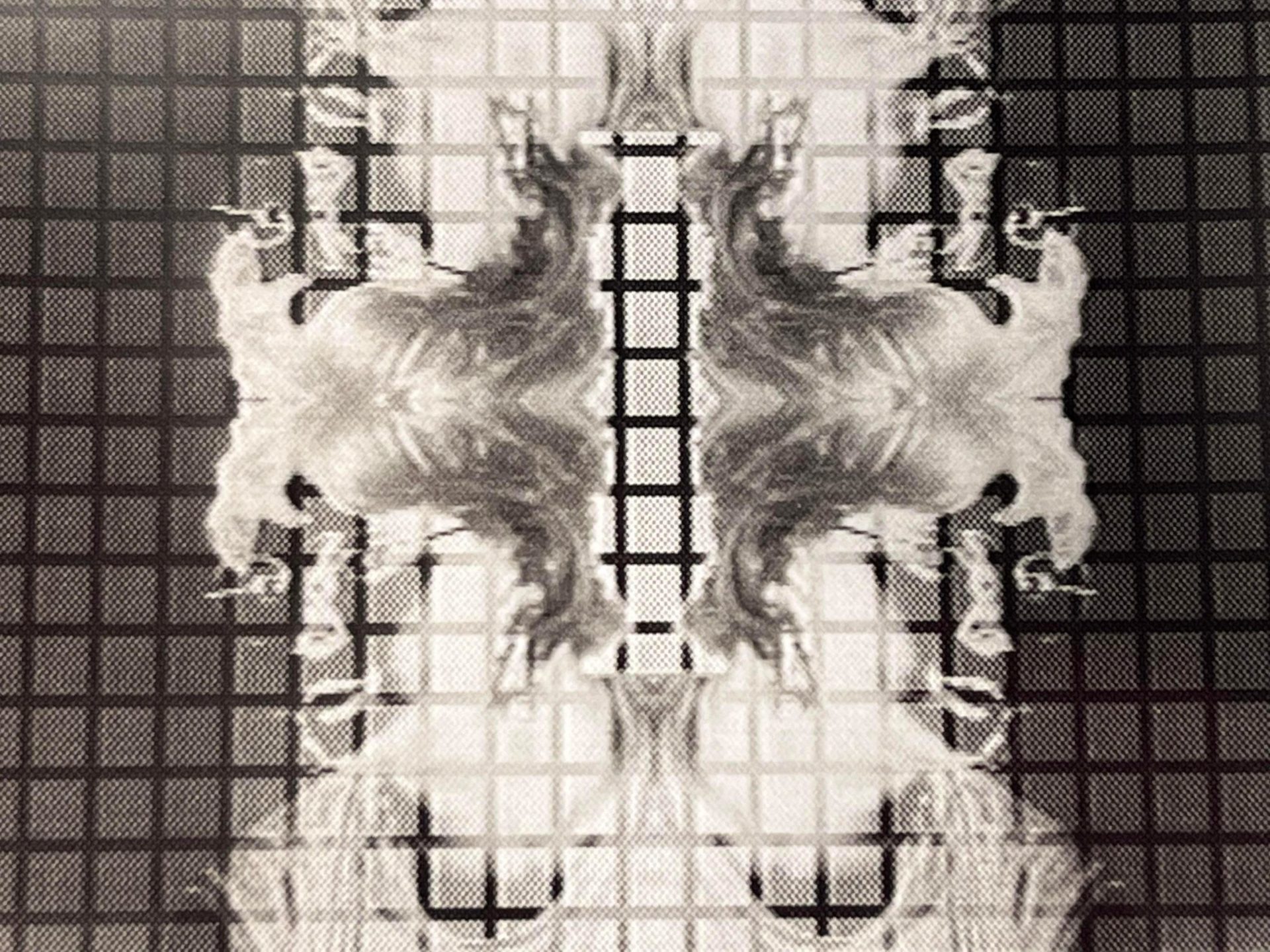The Importance of supporting extraordinary artists in collaborations
The 4th Annual Brave New Works
Since its inception in 2022 with featured artists Jennifer Whitcomb-Oliva, Sarah Saturday, Alex Winer, and Lenin Fernandez, OZ Arts Nashville’s Brave New Works Lab has become a crucial incubator for stage artists and collectives experimenting between performing arts disciplines and daring to imagine what seems to be beyond reach at first glance. As the OZ Arts Executive and Artistic Director Mark Murphy noted in his program presentation on the third evening of the showcase, “Brave New Works Lab is one of the most important things we do.” Rightfully so, this platform enables the brewing of boundary pushing works in progress. While OZ Arts offers the groundwork for producing and promoting the work, the artists can focus on developing the artworks being discussed.
I attended the last evening of the showcase which this year took place between May 15-17. Referring to Mark Murphy’s remark again, as it always happens with stage work that necessitates multiple rehearsals, the artists embody their practice through repetition. In that manner, on the third evening, I witnessed performances that had landed well, and this was visible through the artists’ comfortable presence in the space and under the omnipresent gaze of the audience.
Slithered through the evening program, the audience was subtly handed out a donation envelope, in hopes that this event will help in stimulating OZ Arts’ budget. They too were hit by the NEA funding cuts, thus endangering the rich and particularly international program that this company offers to Nashville.
For this year’s edition of Brave New Works Lab, OZ Arts has curated four short-form performances, where sound and movement were the predominant artistic expression.
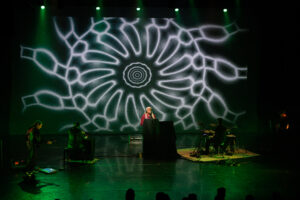
In Welcome to Paradise, renowned spoken word poet and visual artist Landry Butler collaborated with the Inglewood Social Club quartet which habitually incorporates video projection to their live music performances. While Butler is facing the audience, from behind a podium, the musical performers have their backs turned to the audience, a lesson we are taught is an absolute no-no in directing school, unless it means something, which in this case, it does. The setup recalls a congregation and Butler, a performing preacher evoking Sun Ra’s Afrofuturist posture while the musicians are his congregation. “Welcome to the American Dream. We got things you need and things you didn’t know you do. We’ve got so much power, it’s not even funny.”- declares Butler in one of their lines.
The subverted mirroring that Butler utilizes in their performance concept reminded me of what the Slovenian industrial music group Laibach from Die Neue Slowenische Kunst (The New Slovenian Art) was doing in ex-Yugoslavia during the 1980’s. Through over-identification, the embodied and emphasized discourse becomes put into question. Declarations such as “The Spectacle is the medium”, “As above so below, as within, so without”, references to the church of SubGenius, situationist works, hermetic occult philosophy, all speak of an artistic expression that is deeply conceptual and promises both an intellectual as well as a didactical wave of performance creation in Nashville that I am yearning to experience.
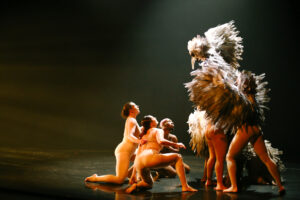
In Bosch, created by Stacie Flood Popp, executive director of Found Movement Group and collaborator Kat Driver, it was easy to spot the amalgamation of continuous work, a quality that is a characteristic for ensembles, and particularly the functional ones.
Taking inspiration from Hieronymus Bosch’s painting The Garden of Earthly Delights, eleven contemporary performers recreate an ethereal atmosphere where the human and other than human connection is sensual but also conflictual and in a constant attempt to redefine the relationships and the boundaries between them. While the movements lean towards traditional ballet, the ensemble of diverse dancers also embodies reactive movement, both to the co-dancers as well as to the musical and lyrical rhythms, something that will be even more intensified and noticeable in Kourtney “Koko” French’s About Time.
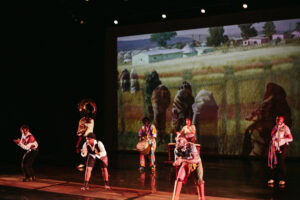
In Ba Tsamaile, choreographer Windship Boyd and choreographer, visual artist, and performing artist Tumelo Michael Moloi put in conversation two innate percussive dance forms, originated around the same time, but in different continents: South African gumboot dance and the Southern tradition of stepping, further overlapped by the accompaniment of rhythms by Guinean drummer Ibrahima “Ibro” Dioubate and brass instrumentalists from TSU.
Projections by artist Sari Hoke become an extension of the live performance, with South African artist and dancer Tumelo Michael Moloi, stepper extraordinaire Aniya Coleman, drummer Ibrahima “Ibro” Dioubate occurring on the screen, inviting the audience to their habitat and native languages. The images are juxtaposed by archival footage of the miners, emphasizing their yellow mud boots, which Tumelo Michael Moloi is also wearing on stage, contrasting his traditional costume, interfaced by images of the queen of England watching a traditional dance, thus drawing a very clear reference to colonialism and exploitation.
This production breaks the fourth wall and has an uplifting gestural conversation as the performers stretch their communication with the audience, meeting the eye contact, asking for a clap response, and offering celebratory smiles.
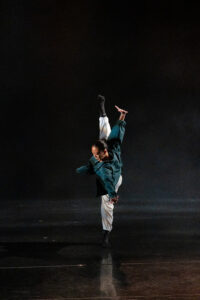
The last piece of the showcase, About Time by Hip-hop dance virtuoso Kourtney “Koko” French engages eight dancers in a movement-based examination of the concepts of time and urgency. This eloquent choreographic concept dwells upon the human relationship with time, emphasizing its value and irreversibility. While the dancers are synchronized as a group as well as their timing is coordinated to the music, most performers shine in their solo moments, cheered at by audience members who encourage them by calling their names. The movements are fluid, graceful, flowing, and natural, the connections between group members short, but meaningful.
What strikes in both About Time, Bosch, and somewhat in Ba Tsamaile, is the audience ovation which was very present throughout the performances or at least in the last evening of the showcase which I attended. Fellow dancers, friends, even the directors of the works responded and motivated colleagues on stage, a form of communication that is very familiar and present in contemporary dance showcases and competitions.
This year’s New Works Lab serves as a testament to two key observations: the potentialities of international and interdisciplinary collaborations as well as the existence of a rather developed contemporary dance scene in a town that has a tailored audience. Stacie Flood Popp’s Found Movement Group and Koko’s Ink Movement which incorporates Koko’s individualized Ko-Style Method, are an indication to the presence of this exciting scene.
On the other hand, the demographics of the Brave New Works Lab has shifted or rather, it has grown from solo works to prevalent collective works, which confirms the growth and expansion of collaborations and puts emphasis on the importance of collaborative works for stage.
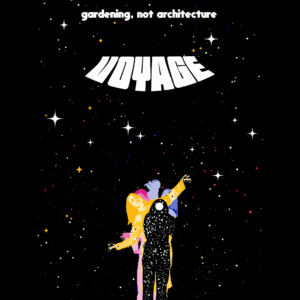
I had a brief talk with OZ Arts’ Associate Director of Programming and Partnerships Daniel Jones, contemplating on the future of these showcased works and how Brave New Works Lab has thus far helped in forwarding the careers of the artists supported by OZ Arts.
Some success stories include Sarah Saturday who has toured with her fully realized version of her multimedia music project Voyage to various places like Los Angeles and Richmond, VA, and soon to St. Louis. Asia Pyron / PYDANCE was able to expand their 2024 Lab creation God’s Country into a full-evening production that played for one night at TPAC this past January. Cameron L. Mitchell’s Regicide: To Kill a King (2024 Lab) is currently being developed into a full-length production and had a reading at Nashville Rep earlier this spring. Clay Steakley & Becca Hoback are continuing their collaboration around The Fire Cycle, of which the first live performance excerpt premiered at the 2023 Lab and film excerpts have been shown at various festivals. They are in talks to develop the full project for a public television broadcast.
“The interesting next step for artists in Nashville and the Southeast will be figuring out how to build infrastructure for local artists to tour their work to other markets and build connections outside the city. Many of these projects have more life in them and deserve to continue developing beyond their initial sharing in the Brave New Works Lab,” Daniel said.
We both agreed that the topic of national and international recognition of Nashville artists, most of whom have unfortunately not yet had the opportunity to tour with their work, deserves further public conversation which we are hoping to initiate sooner than later.

